When you hear the term pro-life, what comes to your mind? More importantly, what do you believe the typical individual thinks about? Do they think it simply refers to a person who opposes abortion? Or is there more to it?
To understand this term and what it actually means in today’s society, we must look at it through the lens of the Catholic Church, as its teachings about the sanctity of life reflect the tenets that encompass the entirety of what it means to be pro-life.
Pro-life Meaning: Definition and Catholic Perspective
Merriam-Webster says the definition of pro-life is “opposed to abortion,” but it’s so much more than that. Being pro-life definitely includes opposing abortion. This belief aligns with the teachings of our faith, as the Catechism of the Catholic Church teaches not only that “human life must be respected and protected absolutely from the moment of conception” but that “from the first moment of his existence, a human being must be recognized as having the rights of a person.”
But pro-life teaching goes beyond the abortion debate. We must uphold the sanctity of life at all stages—from a single cell embryo until natural death, and everything in between. That means that we protect the sick, the elderly, those with disabilities, the poor, and the vulnerable as well.

Why? We do this because, as human beings, we are created in the image and likeness of God. The Vatican’s International Theological Commission’s document on communion and stewardship explains that “the imago Dei [the image of God] consists in man’s fundamental orientation to God, which is the basis of human dignity and of the inalienable rights of the human person. Because every human being is an image of God, he cannot be made subservient to any this-worldly system or finality.”
We are made in God’s image. Thus, we have dignity and value. We matter. We matter to Him, to our families, and to the world in general, even though it may not seem that way to some. To live an authentic pro-life life, we must treat everyone as a beloved child of God and see them through His eyes.
Origins of the Term “Pro-Life”
The term pro-life began to gain wide usage in the 1970s in response to laws that sought to legalize abortion. Prior to that, abortion had been illegal or at least heavily regulated. In fact, in the early 1900s, abortion was illegal in all the US states, except during some life-threatening cases. But with the emergence of the women’s movement and the acceptance of birth control, those who supported abortion began to teach that women could not be “free” if they could not control their own bodies. This included the choice about whether or not to stay pregnant once a baby had been created.
An article by the University of Notre Dame’s McGrath Institute illustrated this point, explaining that in the 1960s:
Betty Friedan (who also co-founded the National Abortion Rights Action League [NARAL] in 1969) argued that women’s equality depended on abortion rights; without the right to control their own bodies and decide whether they wanted to be pregnant, women, she and others argued, would never achieve gender equality. The second-wave feminist movement therefore made abortion rights a central cause. Many progressives who supported second-wave feminism began to characterize the pro-life movement as a misogynistic cause led by men who wanted to control women’s bodies.
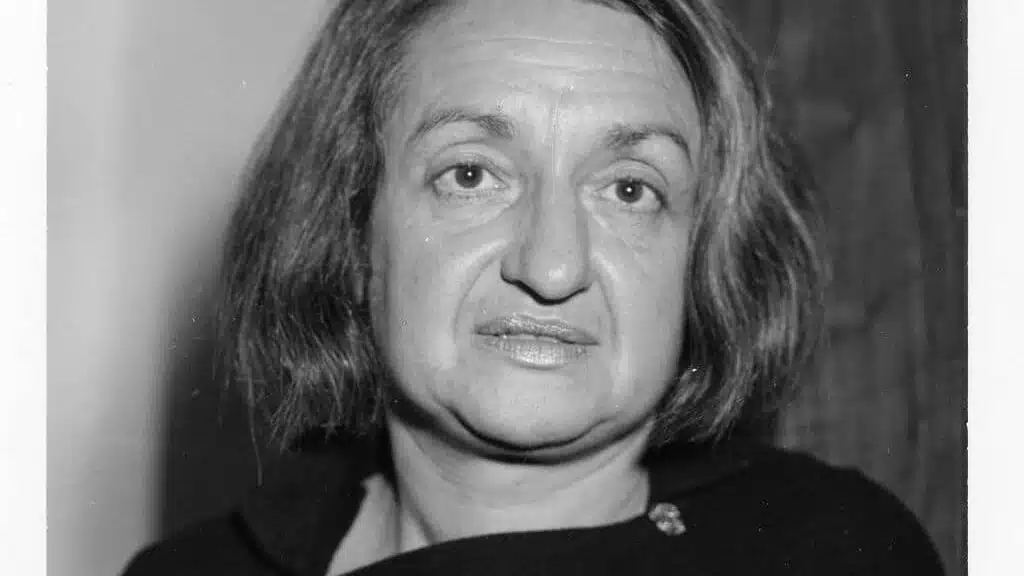
These so-called progressives began to spread the lie that “coat-hanger” self-abortions were ubiquitous and that thousands of women were dying every year because abortion was illegal.
The McGrath Institute document explained that this was false, stating that “by 1950, the CDC reported barely more than 300 deaths per year from illegal abortions” and that, in 1965, that number was 200.
Bernard Nathanson, a vocal abortionist who helped found the National Abortion Rights Action League and who later became a pro-life advocate after realizing the horrors of abortion, famously said:
How many deaths were we talking about when abortion was illegal? In NARAL, we generally emphasized the frame of the individual case, not the mass statistics, but when we spoke of the latter it was always “5,000 to 10,000 deaths a year.” I confess that I knew the figures were totally false, and I suppose the others did too if they stopped to think of it. But in the “morality” of our revolution, it was a useful figure, widely accepted, so why go out of our way to correct it with honest statistics? The overriding concern was to get the laws eliminated, and anything within reason that had to be done was permissible.
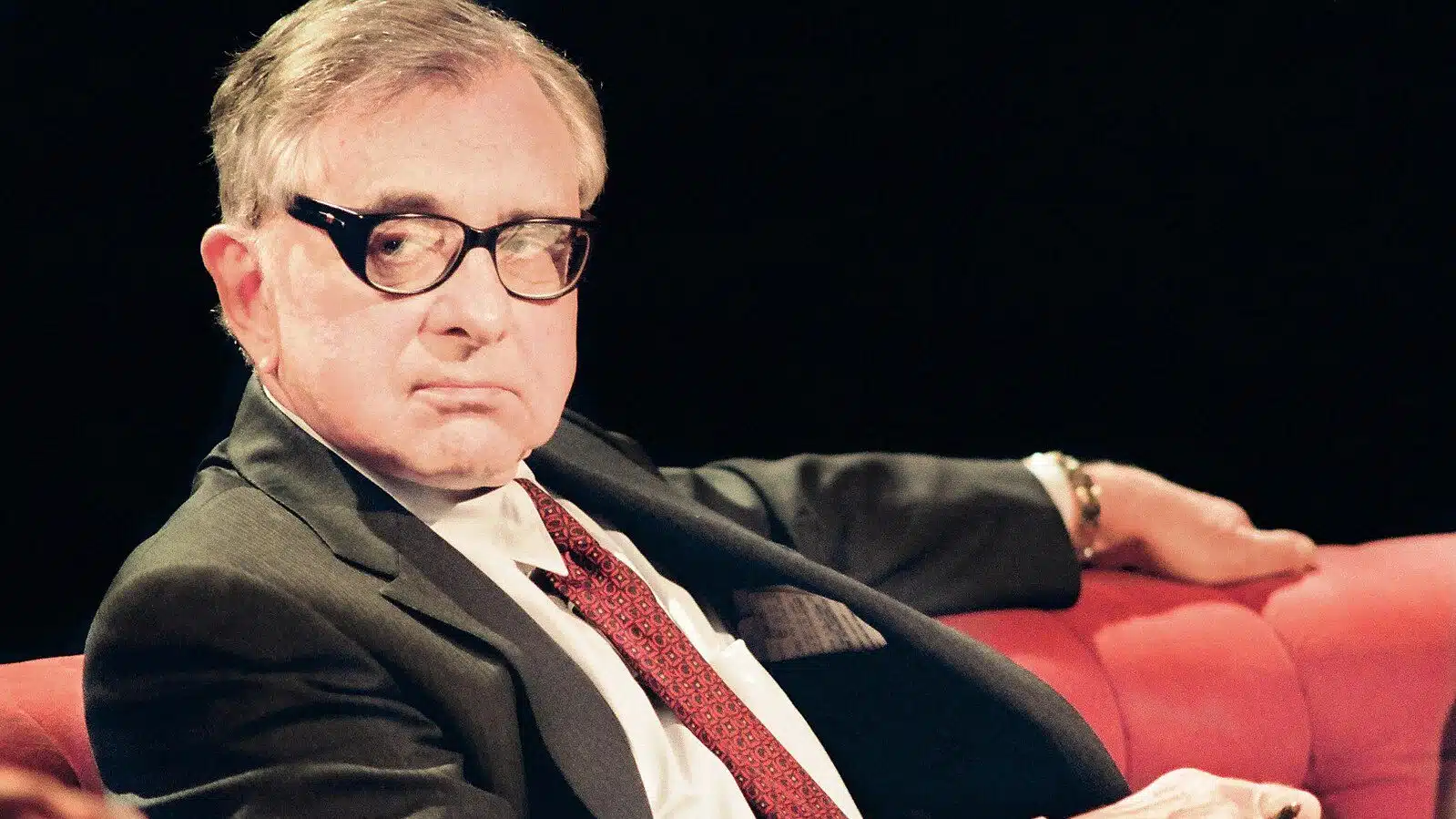
New York and California were the first states to change their abortion laws and make them more lax. Other states soon followed.
This prompted thousands of people to speak out regarding what abortion truly does to moms and babies. At the time, most of the people who taught these truths were Catholic bishops and laypeople who understood the value of life. They began to call their movement “the right to life movement.” And these people were soon labeled pro-life.
Pro-life or pro-choice: What’s the difference?
Choice is one of those words in the English language that has a good connotation. It’s generally thought of as good to have choices; that’s part of living in a free society. We are blessed to live in a country where we can choose which restaurant to eat dinner in, which city we live in, where we want to travel on vacation, and where our kids can go to school.
Pro-abortion advocates wanted to paint their decision positively. So it’s only natural that the term pro-choice came about as a response to the term pro-life. Those who were pro-choice explained that they wanted women to have authority or control over their bodies.
That is something that pro-life people also want. Yet pro-life people maintain that the choice happens before the baby is created. Life begins at conception. Afterward, a woman must understand that the child is a human being who is merely residing in his mother’s body. He is not part of her body, and thus her authority over her body is no longer relevant, as we are now talking about two separate people.
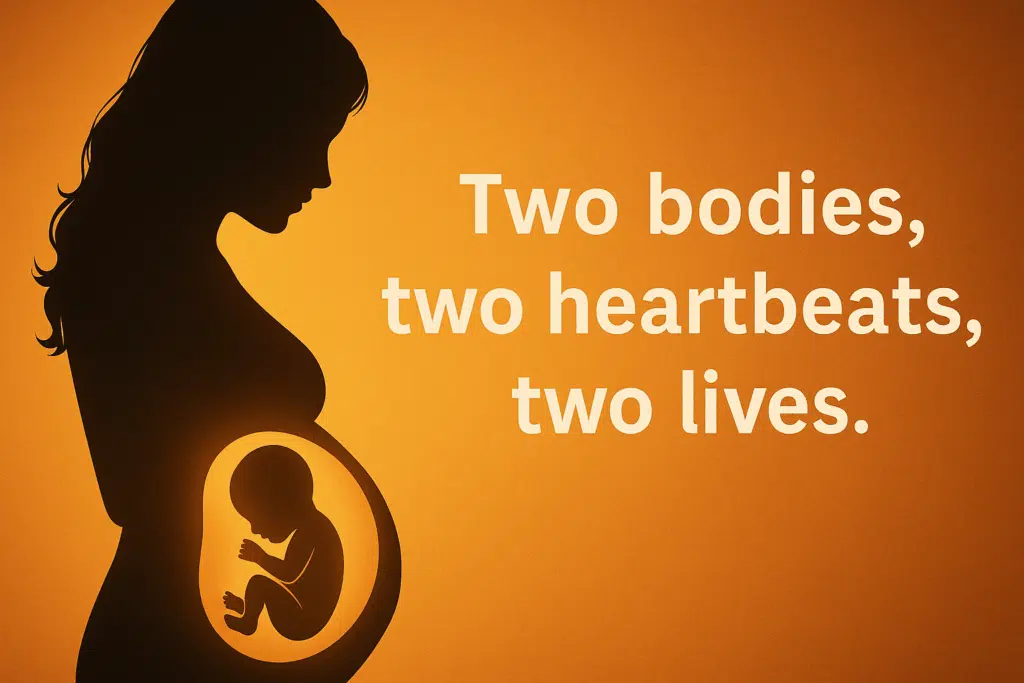
HER Smart Choice, “a woman’s healthcare and abortion clinic,” explains that the term “pro-choice is all about supporting people’s freedom to make this important choice about having children. It’s about respecting their right to decide what’s best for their own lives and circumstances.”
In a similar way, a 2024 Planned Parenthood “Ask the Experts” page explained that “people who identified as ‘pro-choice’ believed that people have the right to control their own bodies, and everyone should be able to decide when and whether to have children.”
This page went on to explain that PP and other organizations no longer use this term because these “labels don’t reflect the complexity of how most people actually think and feel about abortion.” Britannica explains that the term has now been replaced by “reproductive rights movement” or “reproductive justice.”
Though the term pro-choice is still widely used in media and many other venues, we do see these aforementioned euphemisms used more and more frequently by abortion supporters in order to make abortion sound normal and good.
Common Misunderstandings and Misuses of the Term “Pro-Life”
Over the last several decades, those who advocate that abortion is a good have attempted to vilify pro-life people. They paint them as crazy or as anti-woman, and they may even call them “forced birthers.” They liken laws restricting abortion to dystopian novels such as Handmaid’s Tale and accuse pro-life people of only caring about the preborn baby and not the child after he or she is born.
But anyone who has worked in the pro-life field knows this is untrue. Pro-lifers care just as much about the mother and the father, for truly being pro-life means being pro-family. This is evidenced by the fact that there are thousands of pro-life pregnancy care centers that offer both material and financial assistance to moms and babies in need.
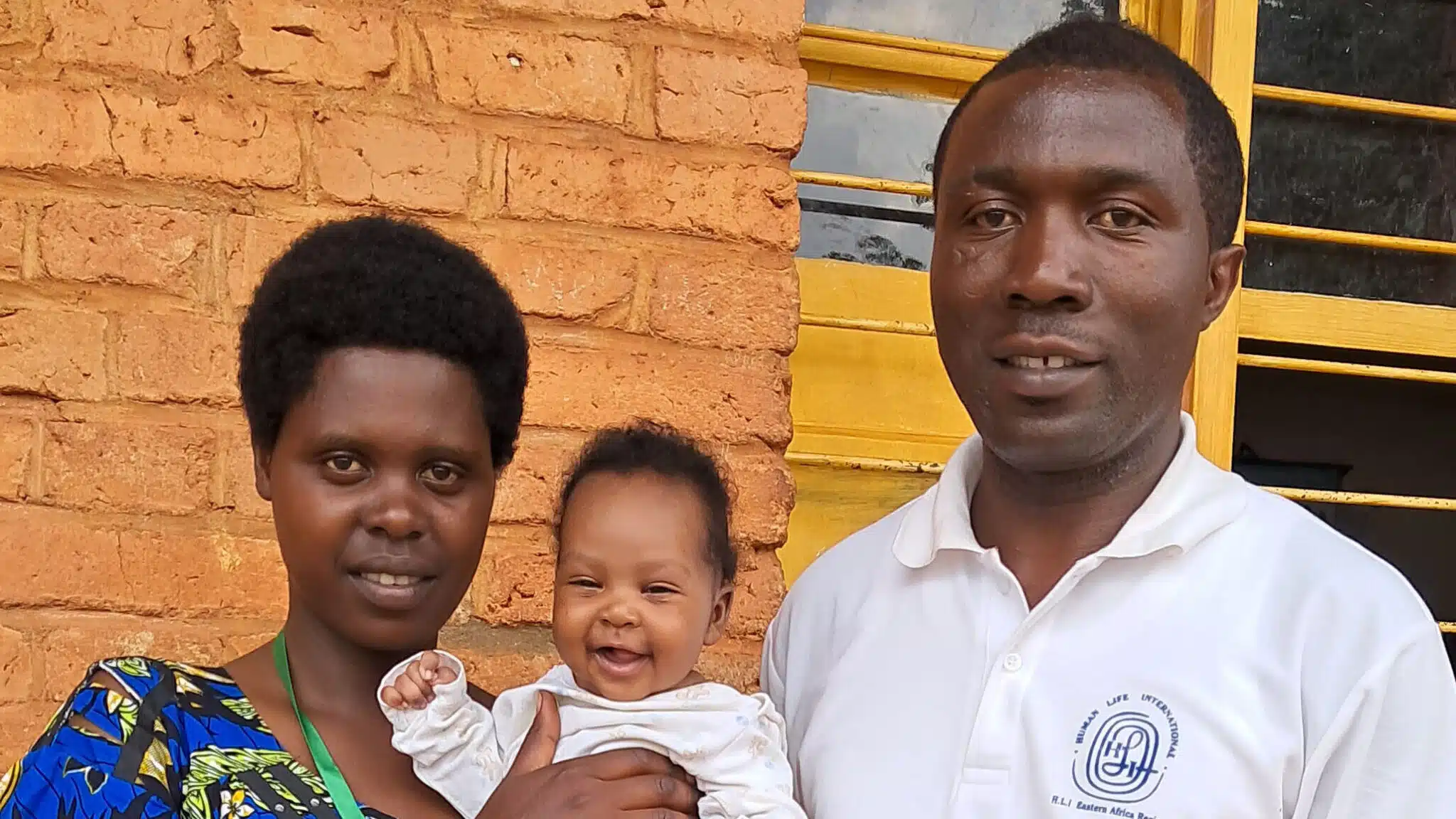
Further, organizations like Live Action, American Life League, and Human Life International exist to teach the sanctity of life and to give help where it is needed. As HLI’s mission states, it works to take “all of Christ’s teaching on life and family to the world, including chastity, marriage, end-of-life issues, and more. This builds a truly pro-life culture.”
Changing the culture to one that respects life and that protects families must be our goal.
Now that we understand this background and some pro-life truths, let’s examine where we are today and how the Catholic Church has expanded the term pro-life to include a respect for the life of all people.
The Catholic Understanding of “Pro-Life”
The Catholic Church has always taught the evils of abortion, euthanasia, and other threats to life. In fact, the 5th Commandment tells us “Thou shalt not kill.” We are never to willfully kill or harm an innocent person. That includes the preborn, the sick, and the elderly.
The Catechism expands on this, saying, “The deliberate murder of an innocent person is gravely contrary to the dignity of the human being, to the golden rule, and to the holiness of the Creator. The law forbidding it is universally valid: it obliges each and everyone, always and everywhere.”
Even an early Christian writing called the Didache condemned abortion, stating, “You shall not murder a child by abortion nor kill that which is begotten.”
But as the threats to life have grown and expanded, the actions to combat these evils have also had to expand. And so the term pro-life has grown to encompass more than just protection for the preborn. It’s now about building what St. John Paul II called a “culture of life”—a culture where all people are respected, cherished, and cared for.
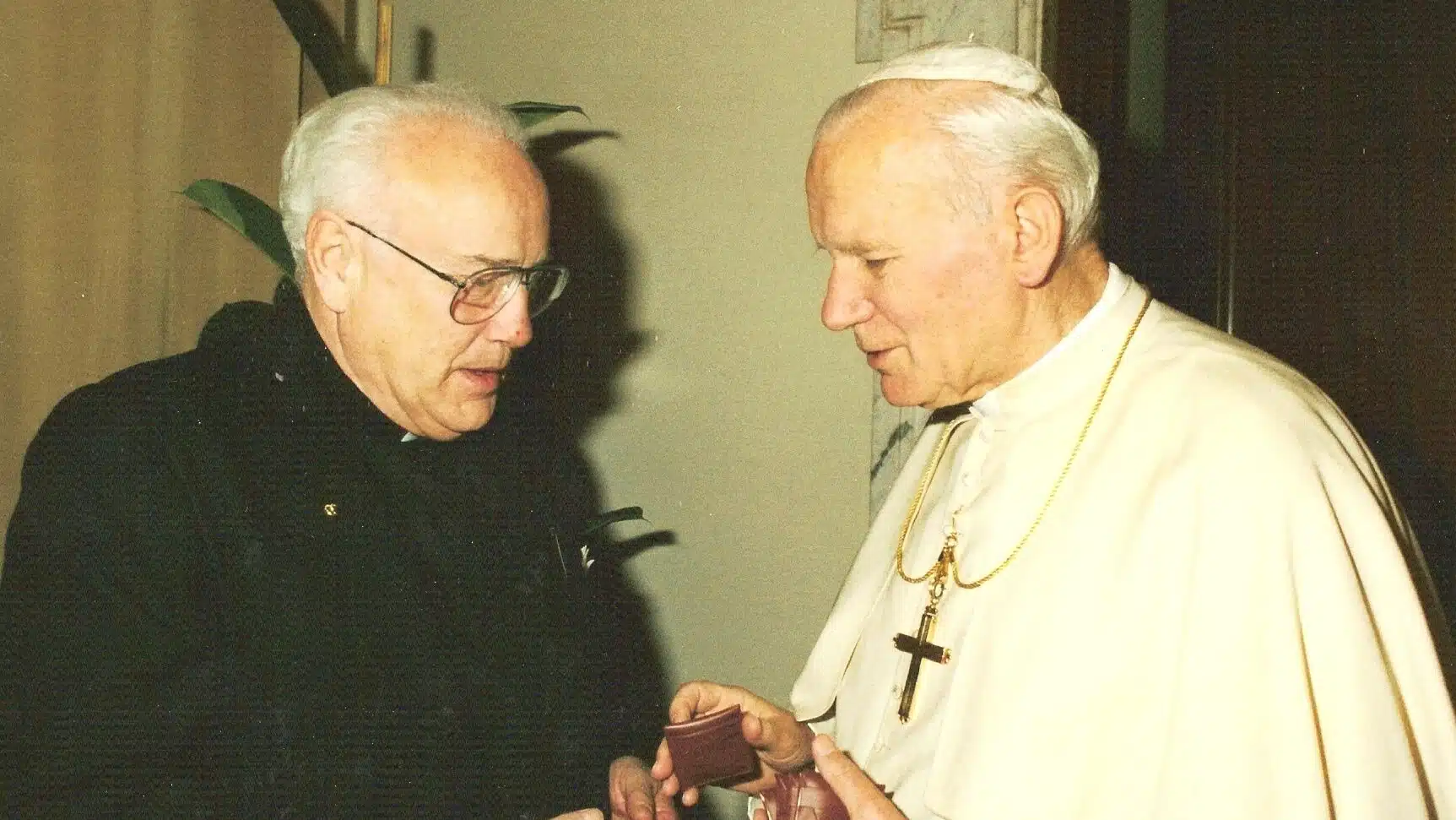
What does building a culture of life look like?
In Evangelium Vitae, St. John Paul II wrote, “The first and fundamental step towards this cultural transformation consists in forming consciences with regard to the incomparable and inviolable worth of every human life. It is of the greatest importance to re-establish the essential connection between life and freedom. These are inseparable goods: where one is violated, the other also ends up being violated. There is no true freedom where life is not welcomed and loved; and there is no fullness of life except in freedom.”
Only when we live according to a consistent ethic of life—“committing oneself to consistently living in ways that uphold the irrevocable worth of every human being”—will we be able to achieve the cultural transformation that the holy pontiff spoke of.
A consistent ethic of life means protecting life at all stages. As St. John Paul II explained, “Human life is sacred and inviolable at every stage and in every situation.”
That is why the Church also opposes contraception, IVF, euthanasia, and any other threats to the life or soul of human beings.
Euthanasia
Euthanasia, often now called physician-assisted suicide, is the hastening of the death of someone who is sick or elderly. Euthanasia derives from two Greek words: “eu,” meaning good, and “thanatos,” meaning death. So the word euthanasia literally means good death, yet it is anything but. The Church teaches that euthanasia is morally wrong because it takes the life of a human being and is “gravely contrary to the dignity of the human person and to the respect due to the living God.”
Contraception
Contraception is also a grievous wrong. Marriage is both unitive and procreative, and the use of contraceptive methods not only destroys the procreative end of marriage, but it usurps the unitive end, as it tells your partner that you only want a part of them. This is the opposite of self-giving love, and it results in two people using each other for pleasure.
In Humanae Vitae, Pope Paul VI wrote that “it is a serious error to think that a whole married life of otherwise normal relations can justify sexual intercourse which is deliberately contraceptive and so intrinsically wrong.”
Further, when contraception fails, it often leads to abortion. And some hormonal contraception—the pill and IUDs—actually cause abortions.
Click here for an in-depth look at how contraception built the abortion culture—and why it’s incompatible with a culture that truly respects life
IVF
In vitro fertilization is the creation of an embryo in a petri dish. As Fr. Shenan J. Boquet recently wrote, “IVF does harm to the marital union and to the couple themselves. It goes against God’s plan for the way children are to be conceived—to be conceived exclusively through the loving embrace of a husband and wife, to be ‘begotten, not made.’”
The Catechism of the Catholic Church teaches that IVF is “gravely immoral” because it infringes on “the child’s right to be born of a father and mother known to him and bound to each other by marriage.” IVF turns people into commodities—something to be purchased at a price.
The poor and vulnerable
Today, being pro-life also means caring for those who do not have the means or ability to adequately care for themselves. Jesus taught that what we do to others we also do to Him. Ignoring the plight of our brothers and sisters is a grave evil.
The Pro-Life Worldview: Beyond Abortion
Being pro-life doesn’t just mean opposing threats to life. It means taking action to build that culture of life that St. John Paul II talked about.
In the book of James, we read, “What good is it, my brothers, if someone says he has faith but does not have works?”
To actually be pro-life, we must live those beliefs and care for people who are vulnerable to the threats to life or who have no idea the dangers they pose. True pro-life work includes not only advocacy but charity, support, and education.
It’s where the proverbial rubber meets the pavement.
Living an authentic pro-life existence means supporting single moms by donating to pregnancy resource centers. It means praying in front of abortion clinics. It means having the moral courage to stand up to your friends and acquaintances when they advocate for IVF or abortion. It means visiting your elderly aunt or sick family member or becoming an extraordinary minister of Communion and taking the Eucharist to them. It means volunteering to help the homeless or donating to shelters. It means practicing Natural Family Planning within your marriage. And it means teaching your kids about the sanctity of life and having frank conversations about how they should treat others.
This education is an integral part of building a culture of life, and it’s what HLI does every day.
HLI in Action: Living the Pro-Life Mission
HLI’s mission is to teach these pro-life truths to people throughout the world. And with your support, we have been able to change lives and hearts.
For example, in Rwanda, a young mother named Yvette was pressured by her family and the baby’s father to have an abortion. But thanks to HLI’s donor-supported pregnancy care center, she found the strength to choose life. With help from pro-life missionaries, she gave birth to her baby and received vocational training—along with a sewing machine—to build a future. Her story is one of many that show how pro-lifers care for both mother and child, before and after birth.
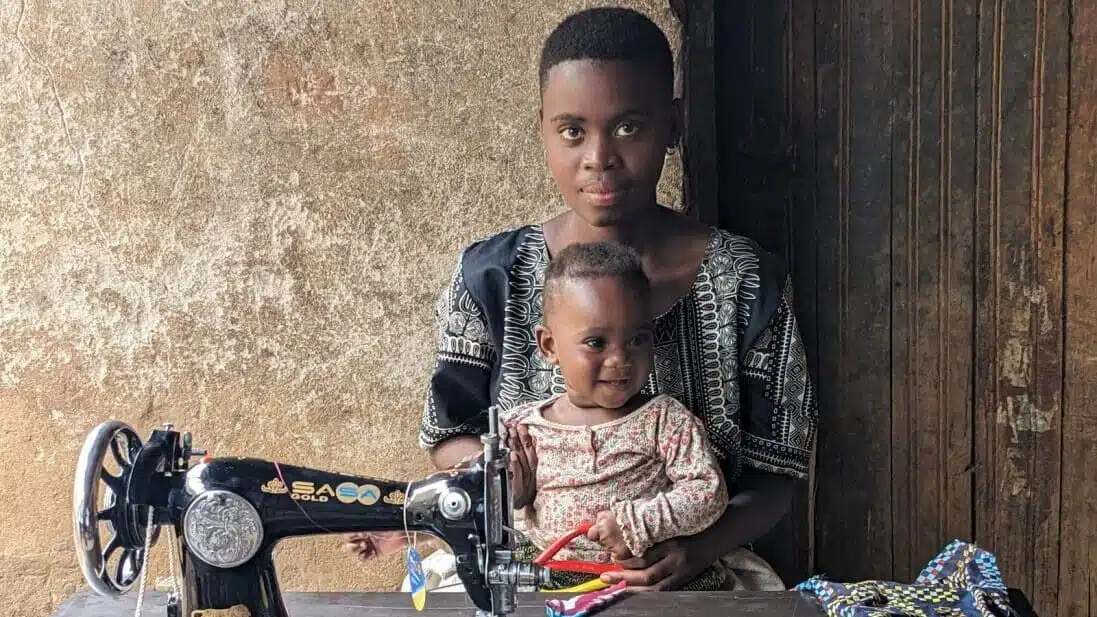
Additionally, HLI missionaries teach seminarians, like Fr. Nelson Francis Ngonyani in Tanzania. During a pro-life conference, Fr. Nelson learned about the sanctity of life, about the importance of teaching chastity to kids, and about the sacrament of marriage. He became passionately pro-life and is now able to share this message with others.
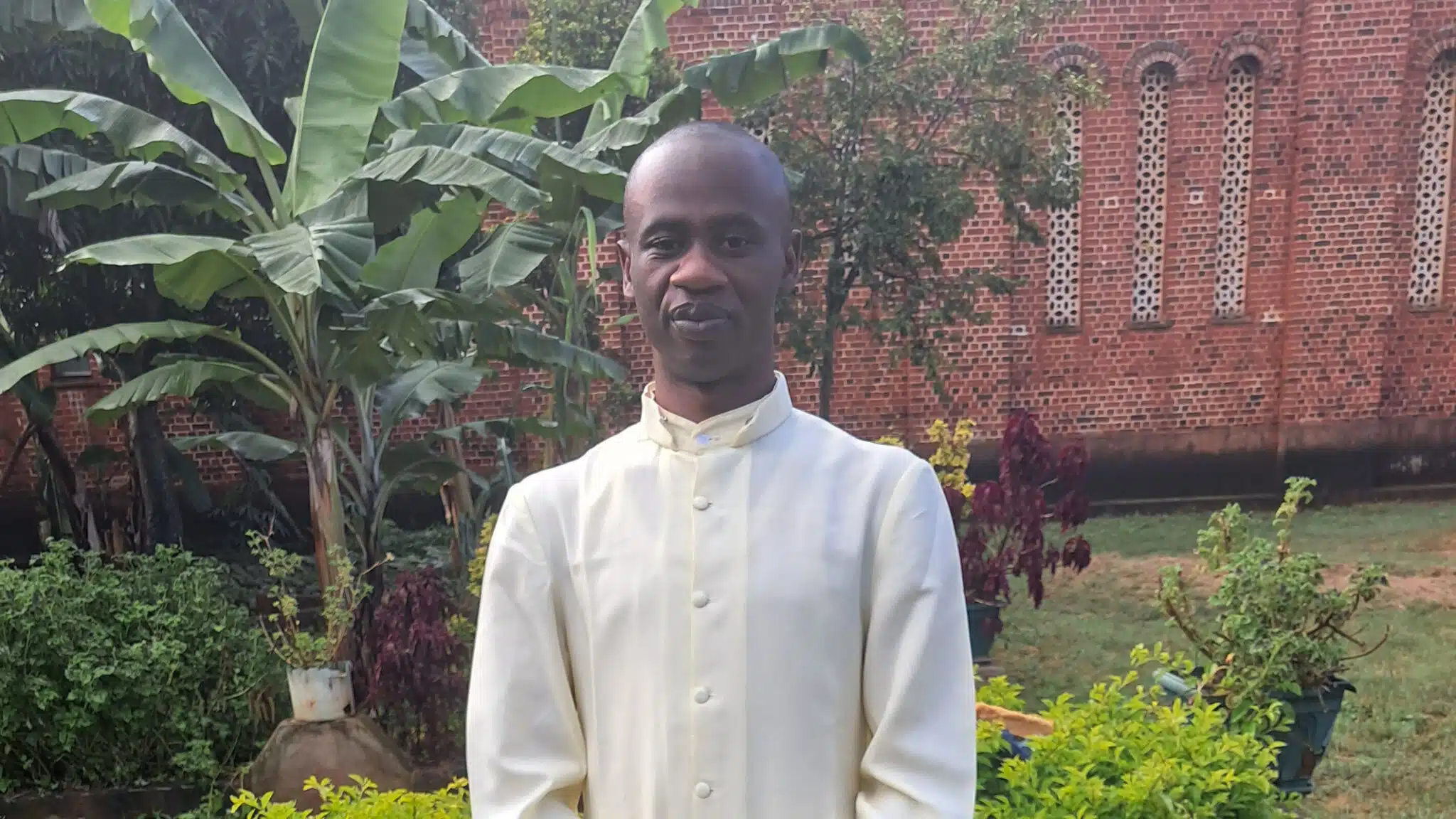
And missionaries in Cameroon were able to form a pro-life club consisting of young students. Through this group, students learned about the development of the preborn baby and even collected donations for babies in a maternity ward, whom they were then privileged to meet and cuddle.
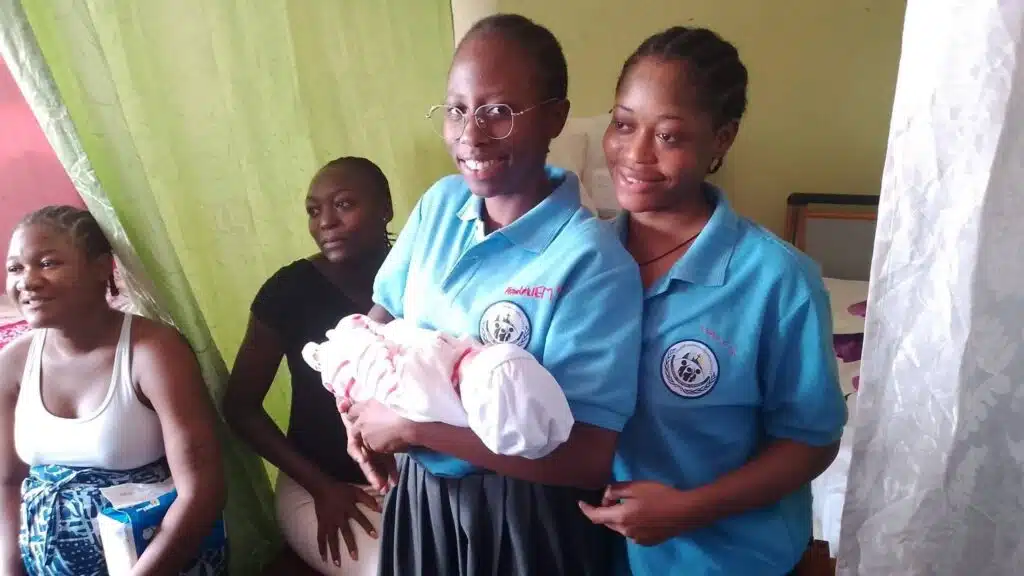
These are missions we hope you will join us in supporting, as we combat the anti-life work of organizations like International Planned Parenthood Federation, which explains that its work includes “comprehensive sex education, provision of contraceptive, safe abortion, and maternal care and responding to humanitarian crises”; the United Nations Populations Fund, which promotes contraception; and MSI Reproductive Choices, formerly named Marie Stopes International, which has as one of its missions to “fight for abortion rights around the world.”
Battling these evils takes time, dedication, and educated pro-life warriors who stand up for the truths that all people have value.
Final thoughts: meaning of pro-life
Every day, pro-life people combat threats to the health and well-being of the born and preborn. Our faith teaches that all people have value and dignity, and our actions must reflect this truth.
Building a culture of life requires determination, resilience, faith, and most of all, love. Because we understand that we are all created in the image of God, we strive to protect those who cannot protect themselves. This is what Christ would have done. It’s what He expects of us. And it’s what being pro-life truly means.
FAQs
What does pro-life mean in Catholicism?
The term pro-life means respecting the dignity of all people—from creation until natural death—and working to protect their lives. It means teaching them that they matter and that they have value. And it means teaching our children to live by these beliefs.
Does pro-life mean only opposition to abortion?
No. Pro-life people work to protect every single person, especially the vulnerable, because we are all children of God and created in His image and likeness. No one is excluded.
What is the difference between pro-life vs anti-abortion?
Pro-life is a global term that encompasses so much more than just protecting babies from the horror of abortion. It means protecting and respecting people at all stages. Anti-abortion means just that—being against abortion. But those who oppose abortion do not necessarily believe in the evils of other threats to life, like contraception, IVF, euthanasia, and so on.
What is a consistent life ethic?
A consistent life ethic is acknowledging and affirming that every person—regardless of status, ability, health condition, or age—has the right to life and deserves to be treated as a cherished son or daughter of God.
Related Content
Susan Ciancio has a BA in psychology and a BA in sociology from the University of Notre Dame, with an MA in liberal studies from Indiana University. Since 2003, she has worked as a professional editor and writer, editing both fiction and nonfiction books, magazine articles, blogs, educational lessons, professional materials, and website content. Fourteen of those years have been in the pro-life sector. Currently Susan writes weekly for HLI, edits for American Life League, and is the editor of its Celebrate Life Magazine. She also serves as executive editor for the Culture of Life Studies Program, an educational nonprofit program for k-12 students.






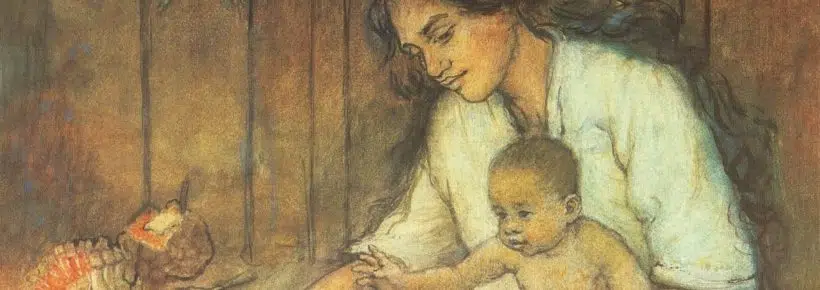






Susan – There is no mention of the “meaning” of pro-life encompassing opposition to capital punishment in your piece. Does the absence of that reference, especially given Pope Francis’ statements on this issue and now Pope Leo’s recent public comments about the complexity of the issue – particularly around the issue of captial punishment and humane treatment of immigrants, mean that HLI will be updating its/your psotion? St John Paul II has also made definitive statements about the proper care and protection of immigrants and refugees throughout his papacy as well. Given the very public exposure on this issue, shouldn’t there be at least some reference to HLI’s description of a fuller understanding of being pro-life for devout Catholics? It seems to me, that if three Pope’s refer to these broader issue as integral to the Catholic Church’s teaching on pro-life, it would at least bear mentioning, would it not?
Thank you for raising these important points. You’re absolutely right that Popes St. John Paul II, Benedict XVI, and Francis have all spoken about the dignity of the human person in contexts regarding capital punishment, immigration, and the treatment of the poor.
At Human Life International, we are faithful to the full body of Catholic teaching on the sanctity of life, including these issues. That said, our mission is intentionally focused on life issues that directly impact marriage, family, and the beginning and end of life—particularly abortion, contraception, IVF, and euthanasia.
Because each of these topics involves complex theological and pastoral considerations, we believe they deserve careful treatment in their own right. For this article, we chose to remain within our core mission focus so we could speak with clarity, accuracy, and authority.
We deeply value your engagement, and we’re grateful for your commitment to promoting a Culture of Life in all its dimensions.
God bless,
HLI Staff
Excellent article. I’d only add two points:
1. The pro-abortion side keeps shifting tactics and slogans. The latest is the lie that abortion is “essential women’s health care.” We need to emphasize that abortion isn’t health care at all, and in fact is very unhealthy for the women it allegedly benefits. Evidence is also accumulating that artificial contraception is also very unhealthy, and that NFP is the best method to protect women’s health. (I always find it very strange that the same women who won’t eat anything unless it’s “organic” think nothing of loading up their bodies with artificial hormones and other weird chemicals.)
2. We need to call out those who use the “consistent ethic of life” as an excuse to reduce abortion to just one item on a checklist, and to claim that (for example) we can support a politician who is for “social justice” even if he/she supports abortion. The right to life, for everyone including the unborn child, is a package deal – you can’t be for saving some lives and not others. Naming no names – but I’m sure we all know people who fit that description, and we shouldn’t let them get away with it.